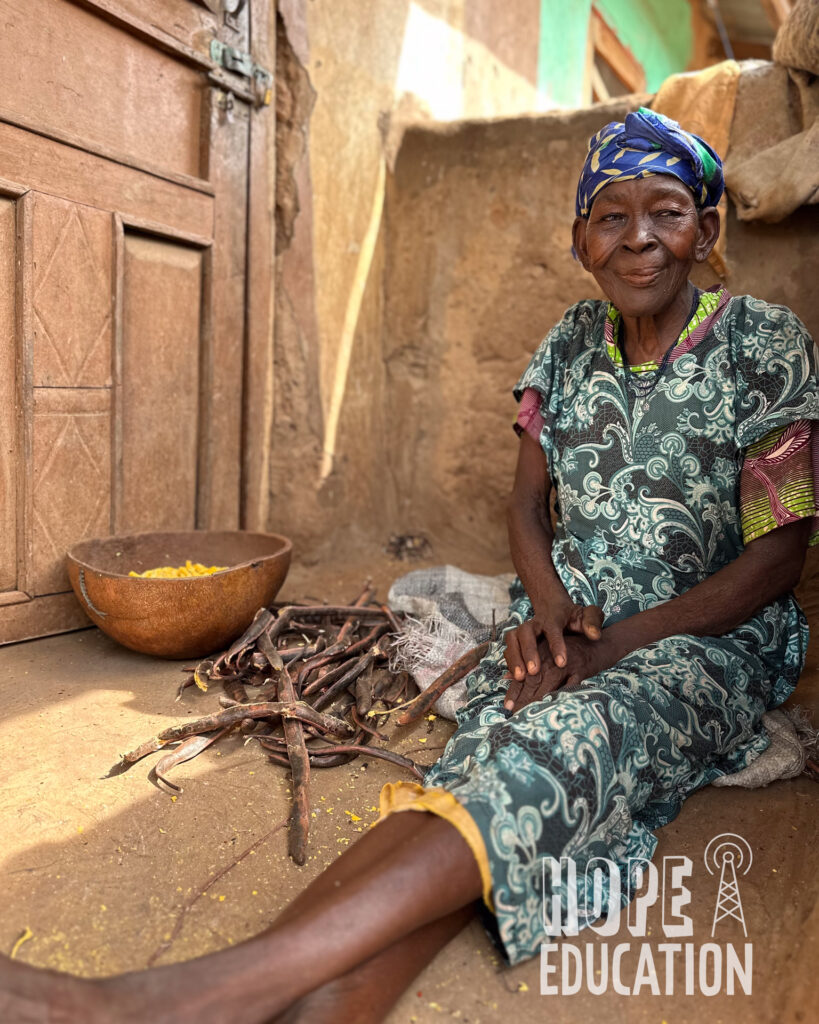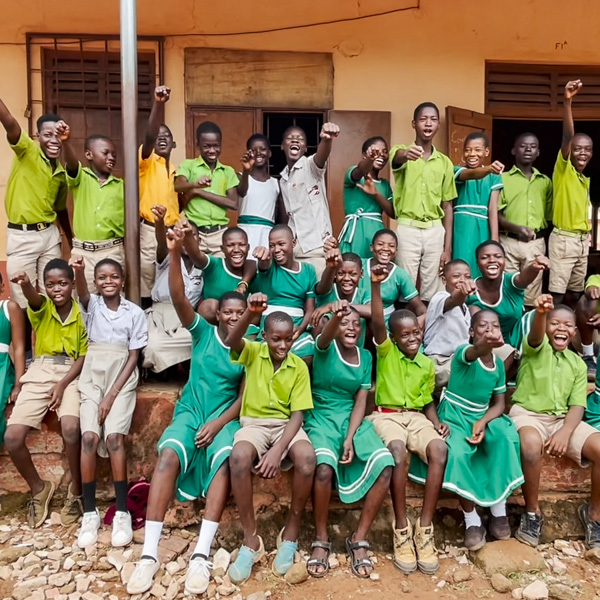The Hidden Connection: Climate Change and Human Trafficking in Ghana
Climate change is reshaping lives across the globe, but its impacts go beyond rising sea levels and extreme weather events. In Ghana, the effects of climate change are fueling an often-overlooked crisis: human trafficking. The intersection of climate change and human trafficking in Ghana highlights a hidden issue that is pushing vulnerable communities – especially women and children – into dangerous and exploitative situations. As climate change disrupts agricultural production, displaces communities, and creates economic instability, traffickers prey on those who are desperate to survive.
Northern Ghana is almost certainly heading toward the worst drought in decades. According to the food security tool, the Cadre Harmonisé, about 50 million people in West Africa and the Sahel, including more than 1 million in Ghana, are food insecure and need assistance to cover their basic food needs. In response, the ECOWAS Commission decided in September 2024 to donate 500 Metric Tons of cereals to Ghana.
These alarming conditions are highlighted in the findings of the ‘Earth Shattering’ report from the UN University. The report emphasizes how climate change in Africa is fuelling modern slavery, both in natural resource sectors and among vulnerable groups like the kayaye, who are increasingly exploited as climate change drives migration and poverty.
Climate Change and Economic Vulnerability in Ghana
Ghana’s economy is heavily reliant on agriculture, with over 50% of the population engaged in farming. Cocoa, one of the country’s most important exports, is especially susceptible to climate variability. Rising temperatures, unseasonable rains, and prolonged droughts are reducing crop yields, leaving farmers in economic distress. The connection between climate change and human trafficking in Ghana is most visible in how these economic pressures push families to make desperate decisions, sometimes selling children into forced labour or other exploitative situations.
Farmers who can no longer rely on their crops for income turn to other, often dangerous, livelihoods including the practice of galamsey, illegal mining, itself environmentally destructive. This economic vulnerability makes entire communities more susceptible to exploitation as traffickers exploit people’s desperation with fake promises of work or financial relief.

Climate change had an iterative impact on the risks in cocoa producing and artisanal small-scale Mining (ASM) communities. Its negative effect on cocoa yields, meant farmers sought cheaper pesticides, cheap or free labour or turned to ASM which further damaged the land and water. The dangerous effects of climate change and environmental damage on ASM meant that miners either lost earnings and fell deeper into debt bondage with their ‘sponsors,’ or risked working in more hazardous conditions. (link)
'Earth Shattering’: Opportunities for Financial Sector Engagement at the Nexus Of Modern Slavery and Natural Resources in Africa
The Kayaye Phenomenon: Climate Change and Human Trafficking in Ghana
Climate change is also causing mass internal migration in Ghana. Northern Ghana is facing longer droughts and more frequent flooding, severely impacting traditional farming practices. As these regions become less viable for agriculture, thousands of people – primarily young women and children – are forced to migrate to urban centres like Tamale, Accra and Kumasi in search of work. This migration away from the land has elevated Tamale to the fastest-growing city in West Africa. As a result, Tamale now faces severe water shortages, rationed electric supplies (akin to load shedding in South Africa) and inadequate sanitation as infrastructure fails to keep pace with the city’s expansion.
The phenomenon of kayaye is one of the clearest illustrations of how climate change fuels human trafficking in Ghana. These female head porters, typically from the northern regions, migrate to urban centres because of climate-induced food insecurity and economic hardship. Once in the cities, they live in vulnerable conditions, often sleeping on the streets without adequate protection.
These conditions make kayaye easy targets for traffickers who offer false promises of better employment or travel abroad. According to studies, a significant number of kayaye are lured into exploitative situations, with many experiencing sexual violence or forced labour. Their migration, driven by climate change, is a direct pathway into trafficking.
Exploitation in Artisanal Mining: Climate Change, Trafficking, and the Informal Economy
Another sector where the link between climate change and human trafficking in Ghana is evident is in artisanal mining, known locally as galamsey. As farming becomes less viable due to erratic weather patterns, many Ghanaians, especially from rural areas, turn to illegal mining to make a living. The growing informal mining sector, however, is rife with exploitation.
Galamsey miners, many of whom are children or young men, work in extremely dangerous conditions, often under the control of traffickers. These traffickers coerce workers into the mines through debt bondage or false promises. As climate change continues to drive people away from agriculture, more individuals are likely to fall into this exploitative industry.
This situation is worsened by the environmental destruction caused by illegal mining, which further exacerbates climate issues, creating a vicious cycle of environmental degradation and human trafficking.
Organized Crime and Cross-Border Trafficking
In the northern regions of Ghana, organized criminal networks have taken advantage of the instability brought on by climate change. The region shares porous borders with Burkina Faso and Togo, making cross-border trafficking a serious issue. The ongoing ethnic conflict between the Mamprusi and Kusasi communities around Bawku, combined with increasing pressure from terrorist groups operating in the Sahel region, further heightens the population’s vulnerability to trafficking.
As climate change continues to displace communities and increase poverty, these criminal networks thrive by targeting vulnerable populations, especially those forced to migrate due to environmental degradation. The link between climate change and human trafficking in Ghana is thus not only an internal problem but also extends across Ghana’s porous borders, amplifying the challenges that the country faces in combating trafficking.
Child Trafficking in the Fishing Industry: The Impact of Climate Change
Lake Volta, home to one of the largest man-made lakes in the world, has long been associated with child trafficking in the fishing industry. Climate change has worsened the situation by disrupting fish populations, leading to a greater demand for cheap labour. Families affected by declining fish stocks are often forced to “sell” their children to traffickers, who then exploit these children in dangerous fishing operations.
The International Labour Organization (ILO) has reported that over half of the children working on Lake Volta are victims of trafficking. Climate change, by reducing fishing yields and increasing poverty, is directly contributing to this form of child labour trafficking.
Government Response and Challenges
While the Ghanaian government has implemented some measures to combat human trafficking, such as the National Plan of Action for the Elimination of Human Trafficking (2022-2026), these efforts do not fully address the role climate change plays in increasing vulnerabilities. Most government programs are focused on reactive measures, such as rescuing trafficking victims, rather than addressing the root causes like climate-induced displacement and economic hardship. Government interventions with kayaye have all been directed at Accra and southern urban areas rather than investing in the north to alleviate the drivers of this migratory phenomenon. So far government interventions have been policitally motivated and have only served to add to the pull factors of unsafe migration.
The government of Ghana has also introduced climate adaptation programs aimed at helping farmers cope with changing weather patterns by improving access to drought-resistant crops and irrigation. However, these efforts often do not reach the most vulnerable populations in rural areas, where traffickers are most active.
Conclusion: Addressing the Root Causes
The link between climate change and human trafficking in Ghana is undeniable. As climate change continues to destabilize livelihoods, disrupt traditional farming practices and displace communities, it will also fuel the human trafficking crisis. Addressing this issue requires a multi-faceted approach that includes tackling the root causes of both climate change and trafficking. Whilst policies to tackle climate change require international cooperation, its effects need to be offset locally to address the increasing lack of economic opportunity, barriers to education, gender inequality, normalisation of child labour particularly young girls and rising inflation against a backdrop of increased imports such as fertiliser, seed and cement.
Ghana must focus on creating sustainable economic opportunities in the north, improving education, and strengthening social safety nets to protect its vulnerable populations. By integrating anti-trafficking measures into climate adaptation strategies, Ghana can create a safer future for those at risk of exploitation. The HEP program is aimed at equipping vulnerable populations with the information they need to keep themselves safe from trafficking. The problem of climate change-related trafficking will undoubtedly continue to worsen making HEP’s mission to educate and raise awareness about human trafficking increasingly urgent.
‘Earth Shattering’: Opportunities for Financial Sector Engagement at the Nexus Of Modern Slavery and Natural Resources in Africa – a collaborative project between UNU-CPR’s FAST initiative and UNU-INRA



